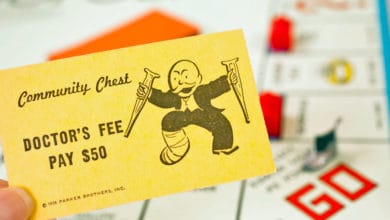By Evan Laveman and Larry Laveman
For other tips on medical interviews look at these related articles || How To Prepare for a Medical School Interview | Common Interview Mistakes | 10 Articles to Prepare for Med School Interviews | How to Prepare for a Medical School Interview ||
The big business of drug revenue is constantly being fed by new and inventive ways of creating markets for drugs to affect. This inventive marketing strategy was developed by SmithKline (today known as GlaxoSmithKline), a British pharmaceutical company, to market their depression drug Paxil in 1991. It has since been adopted by many other pharmaceutical companies, including Pfizer in marketing Viagra, and Merck in marketing Zostavax, their drug for Shingles. It’s a very effective strategy, contributing to over 4 billion total prescriptions being written in 2012 and drug spending topping $320 billion. At the time of Paxil’s release in 1991, it was the third drug to get FDA approval in the category of SSRI’s (selective serotonin reuptake inhibitors) to treat depression. The breakthrough drug was Prozac in 1986, followed by Zoloft in 1990. By the time Paxil hit the marketplace, Prozac and Zoloft were already dominating the space, so SmithKline came up with a unique advertising campaign designed to market a relatively low incident disease called social anxiety disorder (SAD) by establishing the disease as a major disorder that could be treated by Paxil. The strategy worked brilliantly, resulting in the immediate expansion of the SSRI market.
Prior to 1991, social anxiety disorder, and it’s close cousin, generalized anxiety disorder (GAD), were rare maladies in the category of anxiety disorders. With the marketing campaign in full swing, and billboards displaying the slogan, “Imagine Being Allergic to People,” SmithKline was busy getting the FDA to reassign its use of Paxil from a depression medication to an anti-anxiety medication. Given that it generally takes a new drug 8 years to win FDA approval, yet less than 18 months once approved to be reassigned for a new indication, Paxil’s application for reassignment gave SmithKline plenty of time to market the disease to match the drug. Within one year of its new designation Paxil outpaced Zoloft in sales.
In a completely different segment of the marketplace, Viagra was in development as a hypertension medication when researchers found that one of the side effects was increased blood flow to the penis, causing erections in men who were previously impotent. With its drug trials as a hypertension medication lacking efficacy, Viagra was specified as an erectile dysfunction (ED) medication in 1998 and brought to market. Viagra was the first oral medication for ED, but the potential market was small, mostly limited to the elderly and those suffering from diabetes or complications from prostate surgery. Pfizer’s marketing strategy was to expand the demand for Viagra by associating erectile dysfunction with even transitory or situational dysfunction by promising to make fully functional erections even better. The genius of the Pfizer marketing campaign was that it not only treated an entire category of men suffering in silence from ED, it also became a cultural game changer by extending the market, and the conversation, into all segments of the population including women.
Once marketed as a lifestyle drug, anyone with even the slightest loss of erectile strength were candidates for Viagra. Paxil and Viagra ushered in a new era of disease marketing that has caused the incidence of SAD and GAD to skyrocket from less than 2% of the population in 1990 to more than 10% of the population in 2011 and, in the case of ED, estimates are as high as 52% of all men over 40 currently experiencing some form of the disease.
More recently, Merck’s commercial for Shingles clearly demonstrates how marketing the disease, not the drug, is an effective strategy. The commercial begins with a retired firefighter earnestly talking about unexpectedly getting red sores on his skin followed by an extreme burning sensation. “It was like somebody had set a bag of hot charcoal on my neck,” he says. There’s a pause and then a voice over says that if you’ve had the chickenpox, the Shingles virus is already inside you. That gets your attention since 98% of the population of the United States has had this Varicella virus inside them since their childhood chickenpox episode. The firefighter, now present again and equally solemn, says in a slow determined voice, “It is bad. It’s something you never want to encounter.” The voice over then directs the viewer to “The Inside Story” at shinglesinfo.com.
The website is sponsored by Merck, the developer of Zostavax, an injection to protect you against Shingles. The vaccine has demonstrated efficacy in people over 60 years old in preventing the virus from being reactivated, making it a good preventative treatment for Shingles. The problem is that the vaccine isn’t selling, either due to spotty insurance coverage or its $300 price tag, so Merck began to market the disease. A careful reading of the website shows that you do not have to have chickenpox to get Shingles. There is no cure. There is no guaranteed treatment. There’s no known reason why some people get it and some do not. The vaccine can actually give you Shingles. And the vaccine only increases your chances of avoiding the onset of shingles, it does not prevent it. Other side effects can be extreme allergic reactions that include difficulty breathing and swallowing. By not mentioning the drug in its commercials about Shingles, Merck is exempt from using the requisite disclaimers required by the FTC when selling prescription medicine on TV.
Just as SmithKline did in its marketing campaign for Paxil, Merck was able to sidestep the disclaimer issue entirely by marketing the disease, not the drug. The drug is never mentioned. The side effects are never mentioned. Nowhere in the commercial or the website does it explain why only one third of the 98% of people who have had chickenpox get Shingles and what makes them so different as to be susceptible. Once the disease is established, and the majority of people have it or are susceptible to it, the sales of the medication to alleviate the disease soars. Shingles is “bad” and something that no one “ever wants to encounter.” All of this is true, but in the context of marketing the disease, it is also deceptive.
Drugs such as Paxil, Viagra and Zostavax create a world where there is no normal, only an exaggeration of symptoms that require prescription medication to alleviate your risk and/or symptoms. In some cases a normal category, such as SAD, is abstracted into an abnormal category so it can be treated by a specific medication. According to the drug companies, everyone is suffering from something that there’s a treatment for, even if it’s normal suffering or suffering that will remit on its own. Furthermore, if you’re normal there is another drug that can make you even better. These are called “lifestyle drugs” and in the case of Viagra, you can be even better than before even if you didn’t have a prior problem. This market is bolstered by a social response to diseases that were of little consequence until they were expanded and exploited by companies like Merck, SmithKline and Pfizer. During a time when healthcare costs already threaten to financially cripple so many families, it is important to keep an educated perspective on disease advertising and retain some of our diagnostic autonomy in making decisions about the medications we take.
Complex topics such as the role of business in medicine and pharmaceuticals are interesting ways of developing your own understandings of the field that may allow you to really shine in your medical interview.
This article was first posted on LarryLaveman.com
Larry Laveman is a licensed clinical social worker (LCSW) and board certified diplomate (BCD) who owns a private practice in San Diego and is the former chief clinical director for Harmonium, Inc., a nonprofit community based agency.
The views and opinions expressed in this article are those of the author and do not necessarily reflect the views of ProspectiveDoctor



